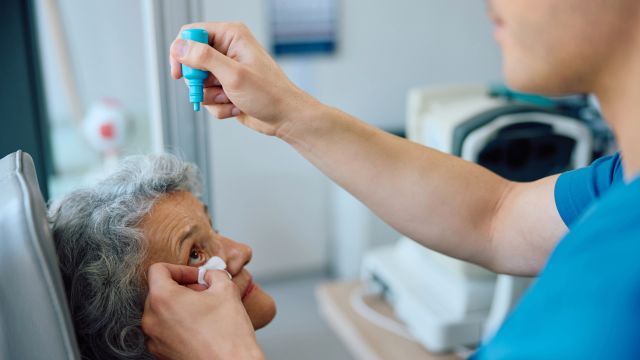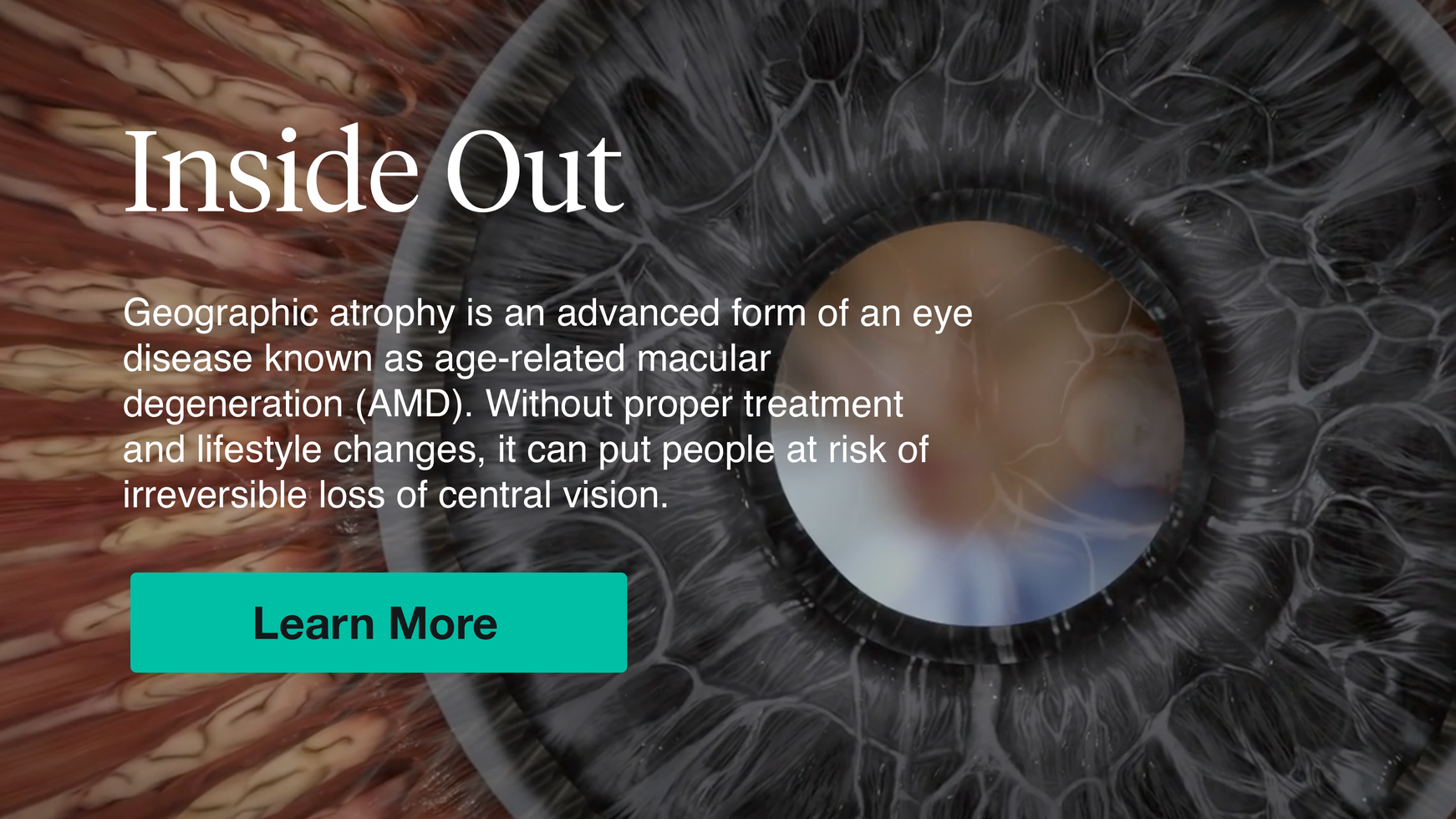Updated on March 28, 2024
In 2023, the U.S. Food & Drug Administration approved the first drugs that treat geographic atrophy, an advanced form of age-related macular degeneration (AMD).
AMD is the gradual breakdown of photoreceptors, light sensitive cells located in the back of the eyeball that convert light that enters the eye into nerve signals that can travel to the brain. With geographic atrophy, AMD has progressed into large clusters of dead photoreceptors. These clusters, or lesions, are located on the macula, the part of the eye that enables central vision—the ability to clearly see what is in front of the eyes.
The first drugs approved to treat geographic atrophy are complement inhibitors. These drugs are given with an intravitreal injection—an injection into the eyeball. Below is an overview of how these medications work, what to expect at an appointment, and what to do if the idea of an intravitreal injection seems intimidating.
How do complement inhibitors work?
The exact mechanisms of how and why geographic atrophy occur are not fully understood. Research has linked geographic atrophy to abnormal activity in a part of the immune system called the complement system. While the mechanisms are complex—and again, not fully understood—the basic idea is that abnormal complement system activity contributes to damage to photoreceptors.
Complement inhibitors work by suppressing this inflammation. This cannot cure geographic atrophy or reverse vision impairment caused by geographic atrophy. But it can help slow down the growth of geographic atrophy lesions, which get bigger over time. Slowing the growth of lesions may help slow the progression of vision loss caused by geographic atrophy.
Before an injection
Tell your healthcare provider about any health conditions you have, any medicines you are taking (including over-the-counter medications), any history of allergies or allergic reactions, and any history of bleeding tendencies.
At an appointment for an injection
Appointments for intravitreal injections typically last between 15 and 30 minutes. The injection itself only takes a few seconds. Here are some steps that you can expect at an appointment:
- The eye will be cleaned with an antibiotic wash before the injection.
- Eye drops may be used to dilate the pupils before the injection.
- A special clip is used to hold the eyelid open and prevent the eyelid from closing during the injection.
- Typically, you will not be able to see the needle during the injection.
- You may feel pressure or pressing against the eye as the medicine is injected, but you should not feel pain.
- The eye will be rinsed with sterile water following the injection.
Your healthcare provider can review the steps in more detail during the appointment or when discussing an upcoming appointment. If you are nervous about receiving an injection, tell your healthcare provider—they are there to answer questions, and may have strategies to help you relax.
After an injection
Your healthcare provider can also review what to expect in the hours and days following an injection, such as:
- How to care for the eye in the hours and days following an injection. For example—does the eye need to be covered, can the eye get wet, do you need to use eye drops?
- What is normal and what is not normal. For example—how the eye may feel, if there will be any changes in vision (like experiencing more floaters), or any bleeding.
- What side effects can occur, when to call your healthcare provider, and contact information if you need to call your provider’s office outside of normal hours.
- Ask for care instructions and other information you can take home with you. This should include the medication that is being given and the dosage.
If you have a question, the best thing to do is ask your healthcare provider, who will be your best source of information.





